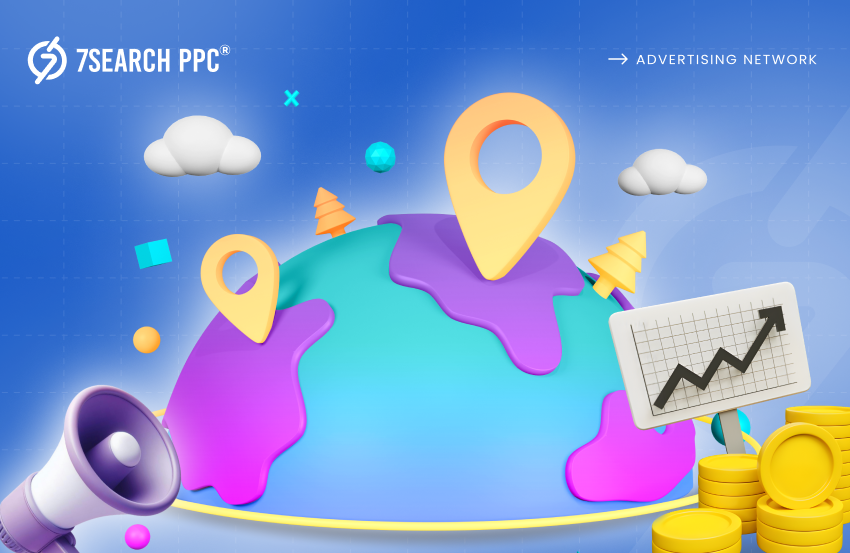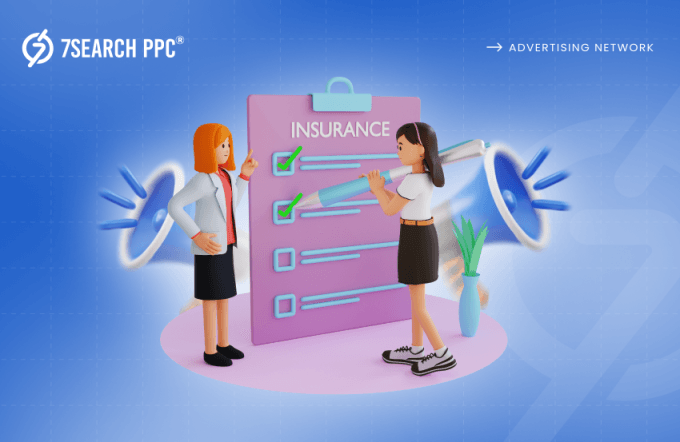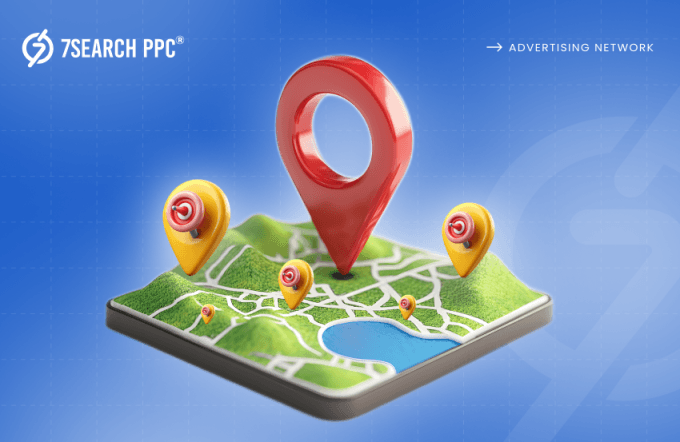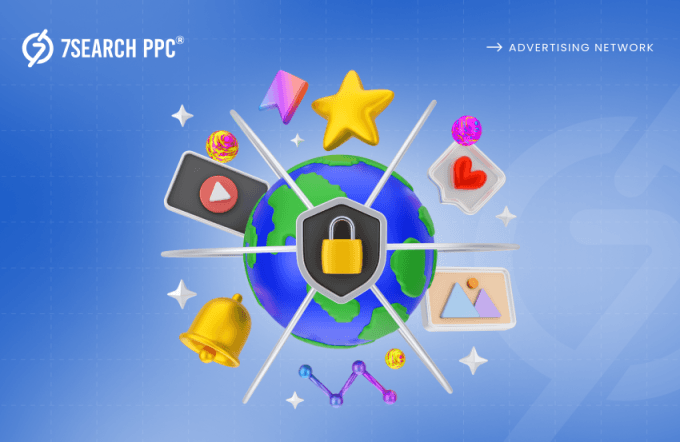Ad budget is a major concern for all businesses, especially for those in a growing stage. These businesses can’t afford to dump their advertising budgets on those audiences who are not interested in their products and services.
Big companies can still find many ways to advertise their products and services in front of a worldwide audience with just a single tap. But what about small businesses? These businesses want to introduce their offerings to an international audience, but the financial constraints impede their potential to tap into global markets with the same ease as larger corporations.
We understand that not everyone can face the heat of high advertising costs; that’s why we have researched the amazing thing for our readers—Geotargeting. It is a special advertising approach that allows advertisers to target their ads to the ideal audience without breaking their piggy banks.
It uses location data (like IP address or GPS) to tailor content and online advertisements to specific geographic areas. Want to know more? Let’s travel with us to the world of targeted ads.
What Is GeoTargeting?
As a business owner, the most important thing for you is to grab the attention of the audience who are thinking of buying your products and services or those who are nearby at your store. Individually, it is not possible to invite them to your store.
So, what strategy would you pick to drive them to your business platform? The answer is simple: you can use Geotargeting. It is an advertising approach to send a specific message to a particular audience at the right time. It is like whispering the offerings in a targeted audience’s ears instead of shouting at the crowded marketplace.
For instance, suppose you opened a burger shop and decided to use geographical targeting to promote your newly opened shop. You are showing your cheesy burger ads only to people near your shop.
It’s like saying, “Hey, lovely people, we have a delicious cheesy burger, and you’re close by—come grab a bite.” This way, you can convey your message to only the right audience for your business, which can help you make your ads more effective.
Benefits Of GeoTargeting
There are various benefits in the box of geographical targeting that you enjoy by incorporating it into your ad campaign.
Relevance
This advertising approach improves the audience’s experience because it only shows the relevant ads. When audiences find ads useful, they are less likely to get bored or irritated and are more inclined to spend their time on them. This allows businesses to achieve their advertising goals quickly.
Personalization
With the help of geographical targeting, you can personalize your ads based on the demographics and users’ interests. This approach makes your ads successful and builds a strong connection with your targeted audience.
Increased Conversion Rates
This advertising approach helps businesses achieve their sales goals and increase conversion rates by showing ads to the right audience at the right time. If you target an audience that closely aligns with what you are offering, delivering the right message through your ads can secure a loyal customer for your business.
Cost-Effectiveness
As we discussed earlier, not every business can manage to spend a lot of money on advertising. To avoid wasting money on an audience that is not relevant to your business, you can use a technique called GeoTargeting. By doing this, you can target users who are more likely to take the desired action on your website, which ultimately increases your conversion rates.
Enhanced Engagement
Most of the audience prefers to purchase products and services from businesses from nearby shops. They are more likely to interact with content that relates to their location and interests.
With the help of geotargeting, businesses can tailor their marketing strategies to reach local audiences. This leads to increased website traffic, higher click-through rates on ads, and, ultimately, more conversions and sales.
Competitive Edge
If you are considering selling just a pen, you will find numerous rivals in your business. Geographical targeting can help you quickly reach your audience with your offerings and make a significant impact in the industry.
The Mechanics Of GeoTargeting
Are you wondering how geographical targeting works? Come, let’s discuss its working mechanics. This advertising approach allows advertisers to pick a particular place where they want their PPC ads to show up. (This targeting feature is available on our ad network 7Search PPC; go and check it out.) This process uses various technologies and data sources to determine the user’s location accurately, which includes;
- GPS
- IP Address
- Wi-Fi
- Mobile Data
- Cell Tower IDs
These data help businesses pinpoint the exact location of a user through geotargeting ads. This information is then used to serve relevant ads or content to individuals based on their geographic location. By understanding where their target customer is located, businesses can optimize their marketing campaigns to drive better engagement and conversions.
Exploring The Different Types Of GeoTargeting
One of the coolest things about geo-targeting is that you can broaden or narrow its power according to your needs. If you want to advertise on Moon, it can also be possible with this advertising strategy.
But bad luck, there are no people on the Moon to see your ads. This advertising approach comes in various forms, and each one has its special potential to fulfill your audience targeting efforts. Here are some common types for you:
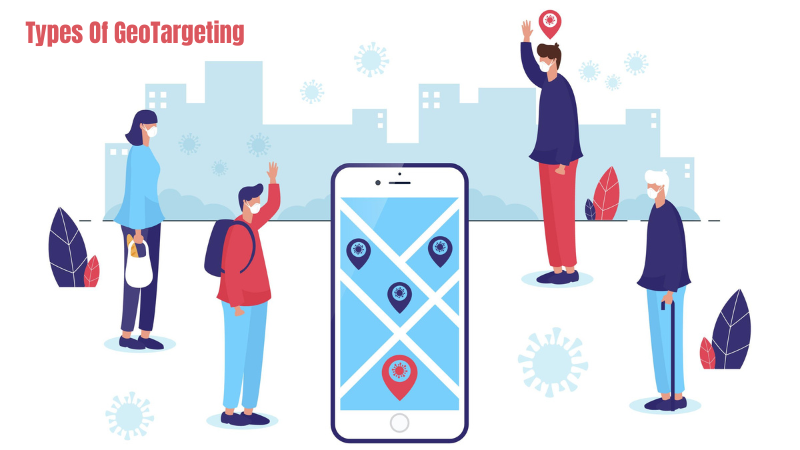
Radius Targeting
While using the food app or website, you may notice that it shows a restaurant that is near your home; this is because of radius targeting. This form of advertising approach helps businesses target their users based on the geographical radius of a particular location, like a store or event venue.
Audience Targeting
This form of geographical targeting approach allows businesses to display retargeting ads to users based on their past interactions, including shopping behaviors. It involves targeting specific demographic groups or audience segments in different geographical areas.
Weather Targeting
Most businesses depend on the weather conditions for their growth. Weather targeting helps businesses target users based on local weather conditions to promote relevant products or services. For instance- a fast food company could send push notifications to users in nearby areas when the weather is cold, promoting hot meals.
IP Address
This targeting approach provides a special power to the businesses to showcase their offerings to the targeted users based on their IP address, which can provide information about their location and browsing habits.
Location Targeting
It is a targeting technique that aims your ads at certain places to promote your offerings. It lets businesses customize their ads for a specific area, making sure they reach the right people there. This approach helps businesses reach local customers and make their ads more relevant for a particular targeted demographic area.
Differentiating GeoTargeting and Geofencing
Friends, geotargeting, and geofencing are both terms that come under location-based marketing. But do you know there are some fundamental differences associated with these two terms? No? Don‘t worry. Keep reading to learn the key differences that you need to know for effective location-based marketing strategies.
GeoTargeting:
- This targeting approach helps businesses to aim at broader areas like cities, regions, or even entire countries.
- The targeting basis of geotargeting can include location, and in some cases, it may be combined with other criteria like demographics, interests, and behaviors to refine the target audience further.
- The main aim of this location-based targeting approach is to increase sales and conversions for a business.
- It relies heavily on user data such as demographics, interests, and behaviors.
- For example- Running ads for a protein powder targeted at people interested in fitness in a specific city or town.
Geofencing:
- This targeting approach helps [businesses to target audiences by setting the virtual boundary.
- It is a targeting technology that focuses on location-based services. Some platforms also provide options to combine it with other parameters as well.
- The primary goal of geofencing is to trigger actions or alerts when an audience enters a specific geographical area by offering in-store promotions or event reminders.
- Geofencing may not require a lot of data apart from the user‘s location.
- For Example- Businesses send notifications of discounts to users who visit a particular store location.
Strategies For GeoTargeting Success
Did you know that 72% of consumers are more likely to procure products and services from businesses that offer personalized local experiences? Yes, you heard it right. Therefore, you need effective strategies for geotargeting to maximize customer engagement and boost sales in specific regions.
Research The Targeted Location- As we all know, geotargeting is totally based on a location. As an advertiser, you research the location where you want to show your ads. You must consider factors like demographics, purchasing habits of the targeted audience, and preferences.
Utilize Various Targeting Options- There are various targeting options available for you. You must understand the workings of each targeting option and utilize them according to the needs of your advertising goals. You can also explore options like geofencing to target users who enter specific geographic areas.
Local Language Messaging- You must consider the language and cultural norms of the target location when communicating messages through geotargeting ads.
Location-Based Offers- If you want an instant result from your targeted advertising approach, then you must create location-based offers such as discounts, cashback, etc. By highlighting the location-based offers, you can capitalize on local customer engagement and increase traffic on your websites.
Measure The Performance- The last step is to measure the performance of your geotargeting efforts and edit your campaign if required. You must monitor the KPIs of your campaign to know that you are effectively reaching your target audience and adjust strategies accordingly for optimal results.
Conclusion
Geotargeting is an amazing tool for businesses as it allows them to communicate with their ideal audience without spending a lot of money. By using location-based targeting, businesses can create ads that are customized to specific areas, making them more relevant and engaging to people in those areas.
This approach helps businesses by turning potential audiences into happy, loyal customers. So, readers, utilize this amazing targeting approach and witness your business gaining momentum.
Frequently Asked Questions (FAQs)
Is geographical targeting only for giant businesses?
Ans. No. Businesses of all sizes can benefit from geographical targeting.
Can geographical targeting be used to improve customer engagement?
Ans. Yes, by customizing your promotions and content to what people like in your area, you can make customers more engaged.
Can geographical targeting be used to improve local search visibility?
Ans. Yes. Optimizing your online presence with geographical targeting can improve your business‘s visibility in local searches.
What are the different types of geographical targeting?
Ans. The various types of geographical targeting are as follows-
- Radius Targeting
- Audience Targeting
- Weather Targeting
- IP Address Targeting
- Location Targeting


